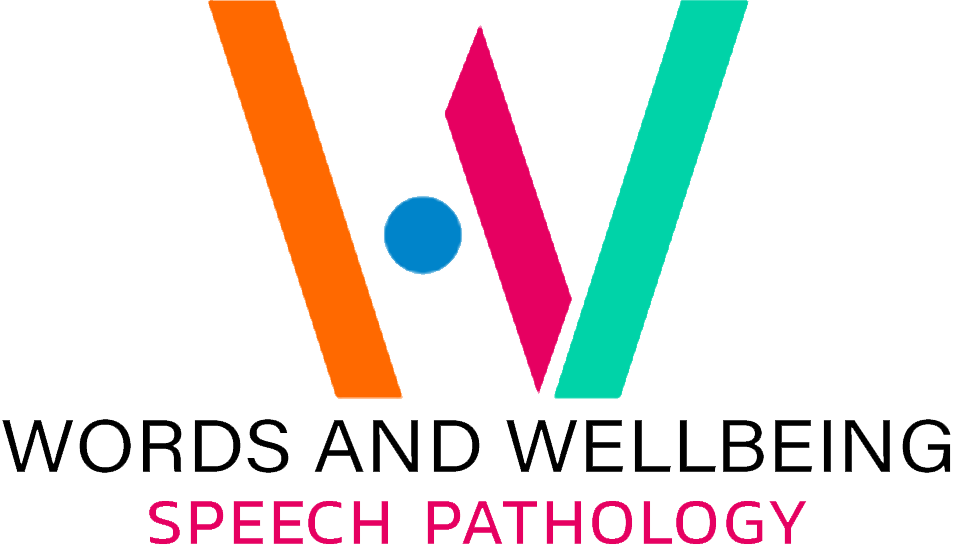Communication extends beyond verbal words. Many of us have thoughts and feelings we wish to share, but various challenges may make communication difficult. Whether due to speech and language barriers, motor planning issues, sensory impairments like hearing or vision loss, physical disabilities, Autism Spectrum Disorder, Down Syndrome, or intellectual disabilities, these factors can significantly impact communication and swallowing.
At Words and Wellbeing Speech Pathology, we're committed to supporting everyone.
Recognising the early signs that indicate a need for speech therapy can be crucial for a child's communication development. Early intervention can significantly improve a child's ability to communicate effectively, which is essential for their academic success and overall confidence.
Below is a combination of markers to watch for and recommended activities to support your child's speech and language development in line with Australian English norms.
Signs to Look For: Limited vocabulary growth, reliance on gestures, frustration when attempting to express themselves, and difficulty with sentence formation.
Examples: Using fewer than 50 words by age 2.
Next Steps: Engage in language-rich activities and consult with a speech therapist for tailored intervention strategies.
Activities: Interactive reading and play-based language modelling can enhance vocabulary and sentence structure.
Signs to Look For: Ignoring spoken directions, trouble following conversations, easily distracted by background noise, and frequent requests for repetition.
Examples: Inability to follow a simple story or consistently misunderstands instructions.
Next Steps: Seek auditory processing evaluations and speech and language assessments, followed by targeted therapy.
Activities: Sound identification games and "follow the leader" can improve auditory processing and comprehension.
Signs to Look For: Sound substitutions, omissions, or distortions that persist beyond expected ages for sound mastery.
Examples: A 5-year-old saying "tat" for "cat."
Next Steps: Obtain an articulation assessment and practise targeted exercises given by your Speech Pathologist
Activities: Mirror exercises and sound-specific games help with articulation.
Signs to Look For: Struggles with rhyming, recognising letters and their sounds, and a lack of interest in reading.
Examples: A first grader who cannot rhyme or identify beginning sounds.
Next Steps: Your Speech Pathologist will provide exercises to focus on phonological awareness through identifying sounds, blending, and segmenting.
Activities: Phonemic awareness games and alphabet games are beneficial.
Signs to Look For: Reliance on phonetic spelling, difficulties with spelling rules, and trouble with visual memory of words.
Examples: Spelling "phone" as "fone."
Next Steps: Your Speech Pathologist will implement multisensory approaches to link spelling with phonological awareness.
Activities: Practise spelling patterns and daily writing exercises.
Signs to Look For: Repeated sounds or words and excessively fast or disorganised speech.
Examples: Repeating the first sound of a word several times or blurred speech.
Next Steps: Obtain a comprehensive evaluation by your Speech Pathologist to develop a customised therapy plan.
Activities: Slow and steady talking, along with breathing exercises, can improve fluency.
Signs to Look For: Difficulty with the correct order of sounds, inconsistent errors, limited intonation, and groping movements.
Examples: Saying "buffly" instead of "butterfly."
Next Steps: Begin early, intensive, and individualised speech therapy.
Activities: Repetitive practise and multisensory cues aid in speech production.
Signs to Look For: Significant verbal communication difficulties that cannot be addressed through speech therapy alone.
Examples: A non-verbal child with autism struggling to express basic needs.
Next Steps: Assessment for suitable AAC devices, followed by training for effective use.
Activities: Daily practise with AAC devices and incorporating them into daily routines.
Common concerns
When should my child start talking?
Children usually begin to say their first words around their first birthday. These early words might be simple and not perfectly clear, but they're used consistently and intentionally. If by 18 months your child has fewer than 10 words or isn't speaking yet, it might be time to consult with a speech pathologist.
How do I know if my child needs speech pathology?
Keep an eye on key developmental milestones that could indicate the need for a professional evaluation. Challenges in social interaction, communication, fine motor skills, or gross motor skills are signs to seek advice from a speech pathologist, occupational therapist, or physiotherapist for clarity and support.
Need more info or ready to book?
Contact
us today and let's start
the conversation!
